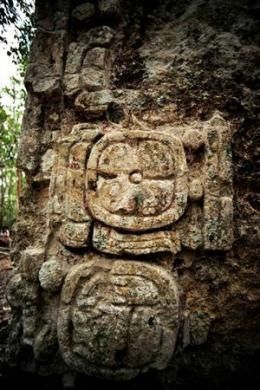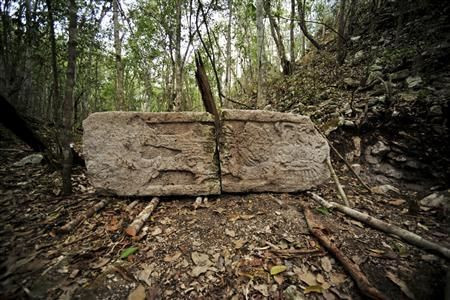Maya City Discovered In Mexican Jungle, Chactun May Hold Clues Behind Mayan Civilization's Collapse [PHOTOS]

An ancient Maya city full of pyramids and complexes has been uncovered by archaeologists. The discovery in a remote jungle in eastern Mexico may shed light on how the ancient civilization mysteriously collapsed in 900 A.D., LiveScience reports.
"It is one of the largest sites in the Central Lowlands,” Slovenian archaeologist Ivan Sprajc said in a statement released by Mexico's National Institute of Anthropology and History, or INAH.
The site has been dubbed Chactun, meaning “Red Rock" or "Large Rock." It was most likely occupied during the Late Classic Maya period, from roughly A.D. 600 until the civilization collapsed 300 years later. Archaeologists estimate 30,000 to 40,000 people lived in Chactun during that period and may have been the seat of government.
“We realized, with big surprise, that the site was even larger than we had expected. What impressed us most were the volumes of the buildings -- they are not extremely high, but very massive,” Sprajc told Discovery News.
Hints of the Chactun's existence were seen on aerial images that showed architectural remains. Before this discovery, the rainforest had only been explored by loggers and rubber-tappers. Using a four-wheel drive truck and hacking vegetation with machetes along the way, archaeologists used their routes to reach the site.
"Lumberjacks and gum extractors were certainly already there, because we saw cuts on the trees," Sprajc told Reuters. "What happened is they never told anyone."
Sprajc and his team found three partial complexes, 15 pyramid remains, courts, plazas, homes, altars, bits of painted stucco and stone slabs known as stele. One of the pyramids was 75-feet tall. Epigraphers, who study inscriptions, are analyzing the writings recovered from the site. One mentions a ruler named, K'inich B'ahlam.
“These people may not have known the meaning of the monuments, as some of the stelae were found upside down,” epigrapher Octavio Esparza Olguin from the National Autonomous University of Mexico, told Discovery News. “Though they knew they were important and worshiped them: We found ceramic offerings in front of some of them.”



The Maya civilization, which excelled at agriculture, hieroglyph writing, calendar-making and math, is considered one of the most dominant indigenous societies in Mesoamerica. The Mayans lived in one regional block covering the Yucatan Peninsula, modern-day Guatemala, Belize and some Mexican states. They were unique in their ability to survive in the rainforest, using natural resources to their advantage.
Some speculate the civilization’s mysterious decline in 900 A.D. was caused by overpopulation, endemic warfare, overuse of the land and environmental factors like severe drought, but the true cause remains unknown.
The 54-acre site lies 75 miles west of Chetumal, one of the largest Maya cities found on the Yucatan Peninsula’s central lowlands. Chactun is one of 80 sites discovered by the Archaeological Reconnaissance Project that began in 1996, INAH said in a statement.
The team's research was backed by the Mexican National Institute of Anthropology and History and funded by the National Geographic Society and two European companies: Austria's Villas and Slovenia's Ars Longa.
© Copyright IBTimes 2024. All rights reserved.






















